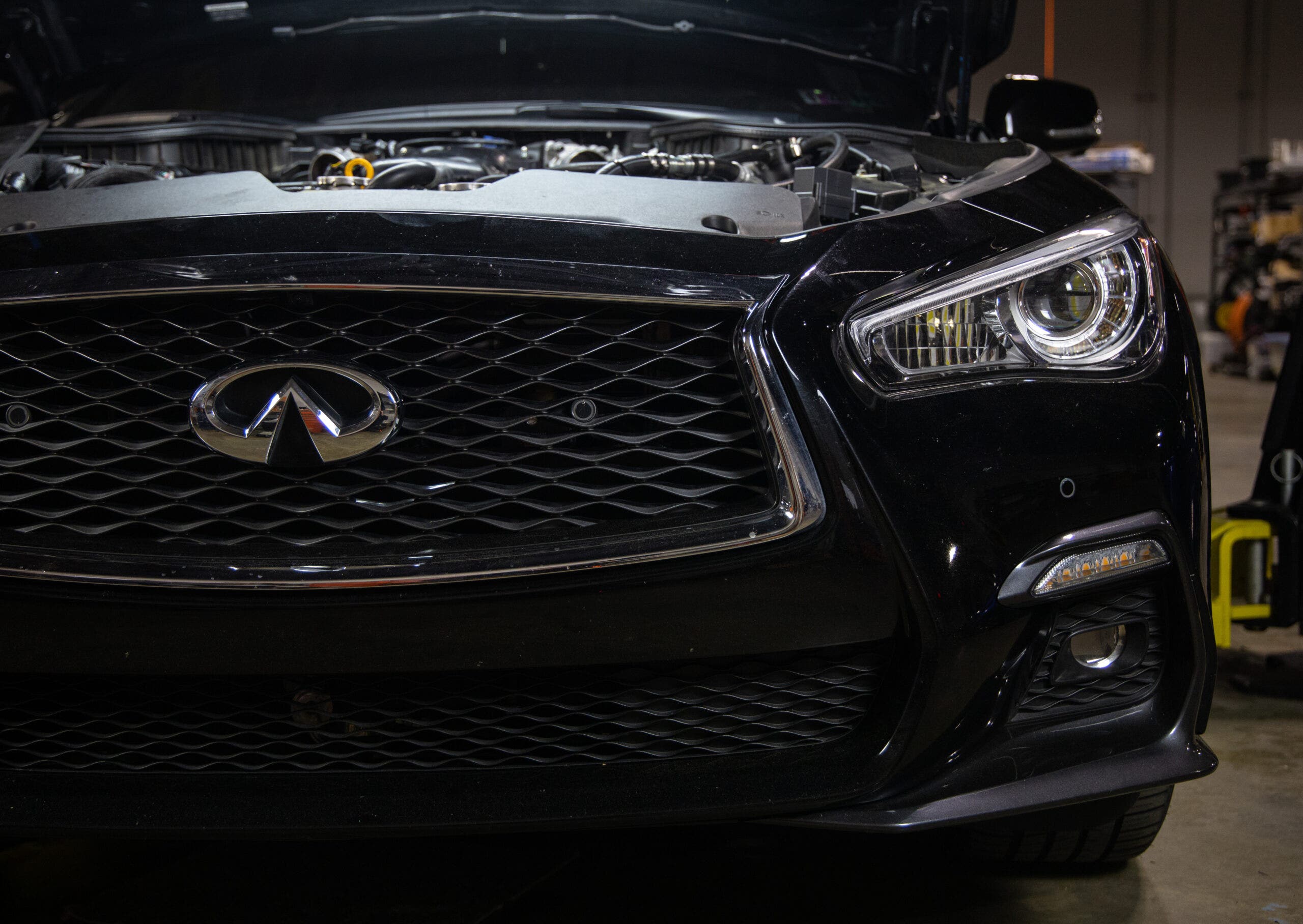
Trickle Down Power - Performance Intercooler Kit R&D, Part 1 - Stock Review
Innovation has a trickle-down effect, especially in the automotive world. At the top of most OEM lineups, there is a selection of uncompromised performance machines, lavish land yachts, and sometimes a combination of those characteristics, which we commoners could only dream of affording one day. That is until the brands start adapting their cutting-edge tech for the production line. That said, it was only a matter of time before the Nissan GT-R's DNA started permeating through Infiniti's production line, landing right under the hood of the Q50 and Q60 for the perfect balance of comfort and performance potential. We know that the Q's can do much more, and we're already on the case to unlock more power from this platform.
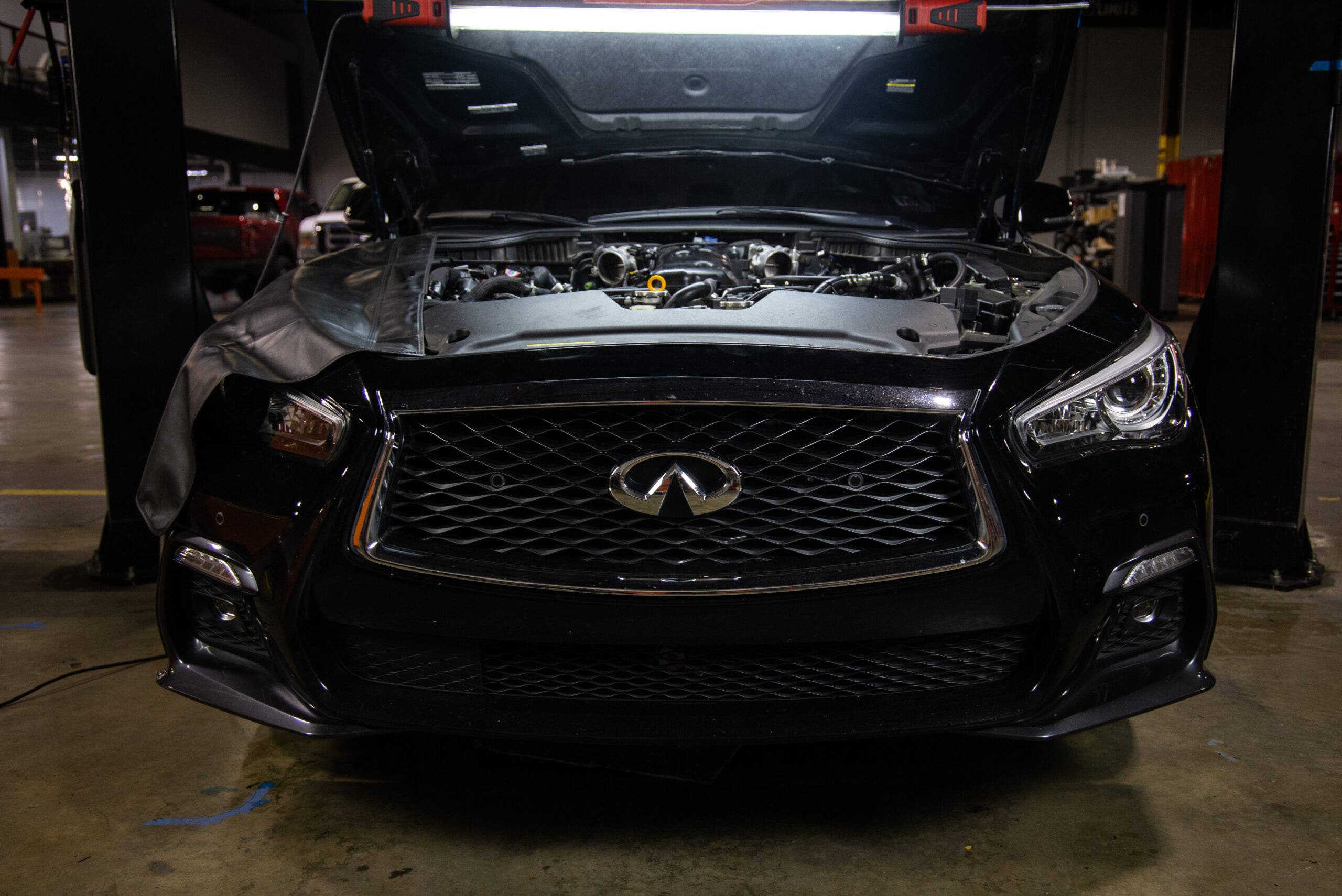
The VR30DDTT isn't the exact powerplant from the mighty GT-R, but it's a descendent and in the same family. The VR under the hood of the Q50 and Q60 has some more modern twists as well, including direct injection, elevated compression ratio, and a pair of air-to-water intercoolers for maximum cooling potential and better suited for the daily commute.
For those not familiar with the concept of air-to-water intercooling, let's dive in for a crash course. The end goal for any intercooler is to pull heat from the charged air and provide the engine with cooler, more dense air, providing better combustion. Where an air-to-air system uses a fresh air source to achieve this, an air-to-water system utilizes coolant. While these systems are more complex than their counterparts, they have plenty of advantages.
For starters, water, the primary ingredient in coolant, has a superior thermal conductivity than air and is much more effective at whisking away the heat from your charged air, resulting in much more consistent intake air temperatures. Also, since the coolant is constantly cycling through the system thanks to the pump, or pumps if you opted for the Red Sport, the intercooler is less prone to heat soak.
The primary heat dissipation of the air-to-water system is performed by an additional radiator, otherwise known as a heat exchanger, which is typically added to the vehicle's cooling stack. This means there is much more flexibility on intercooler placement in the engine bay. For example, the intercoolers in the Q50 and Q60 affix directly to the throttle bodies, eliminating any need for long intercooling piping and significantly increasing efficiency.
Infiniti incorporating an air-to-water system in the Q50/60 is a huge step up over an air-to-air setup, but we want to take this intercooling system even further. First, though, we need to take a look at the entire factory system.
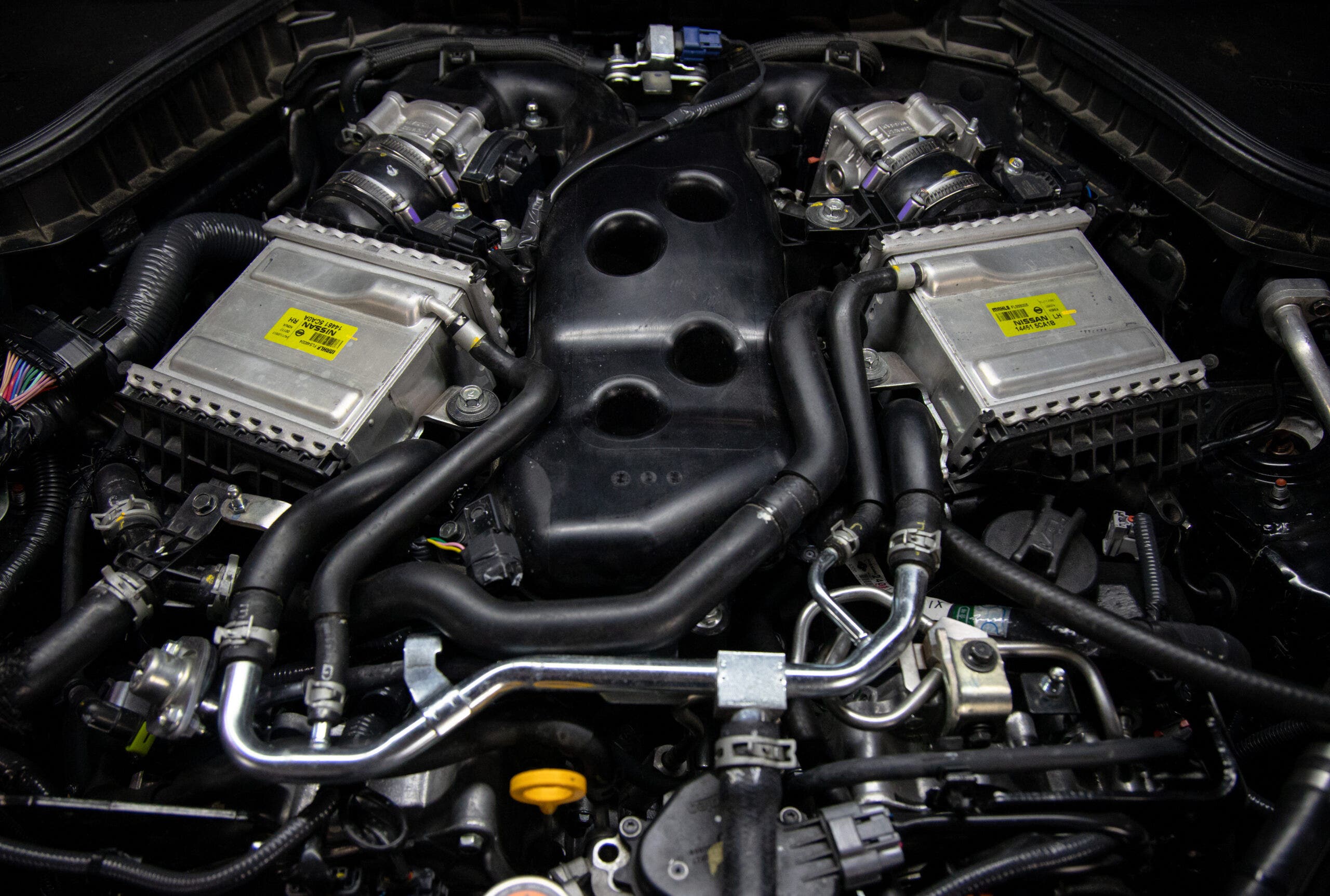
Step one is popping off the engine cover to reveal the chaos. It's a maze of coolant lines in the tightly packed engine bay. As we just discussed, Infiniti opted to use these intercoolers as the direct link between turbo and intake plenum. This strategy maximizes efficiency since the charged air has much less ground to cover. It also means more consistent intake air temperatures.
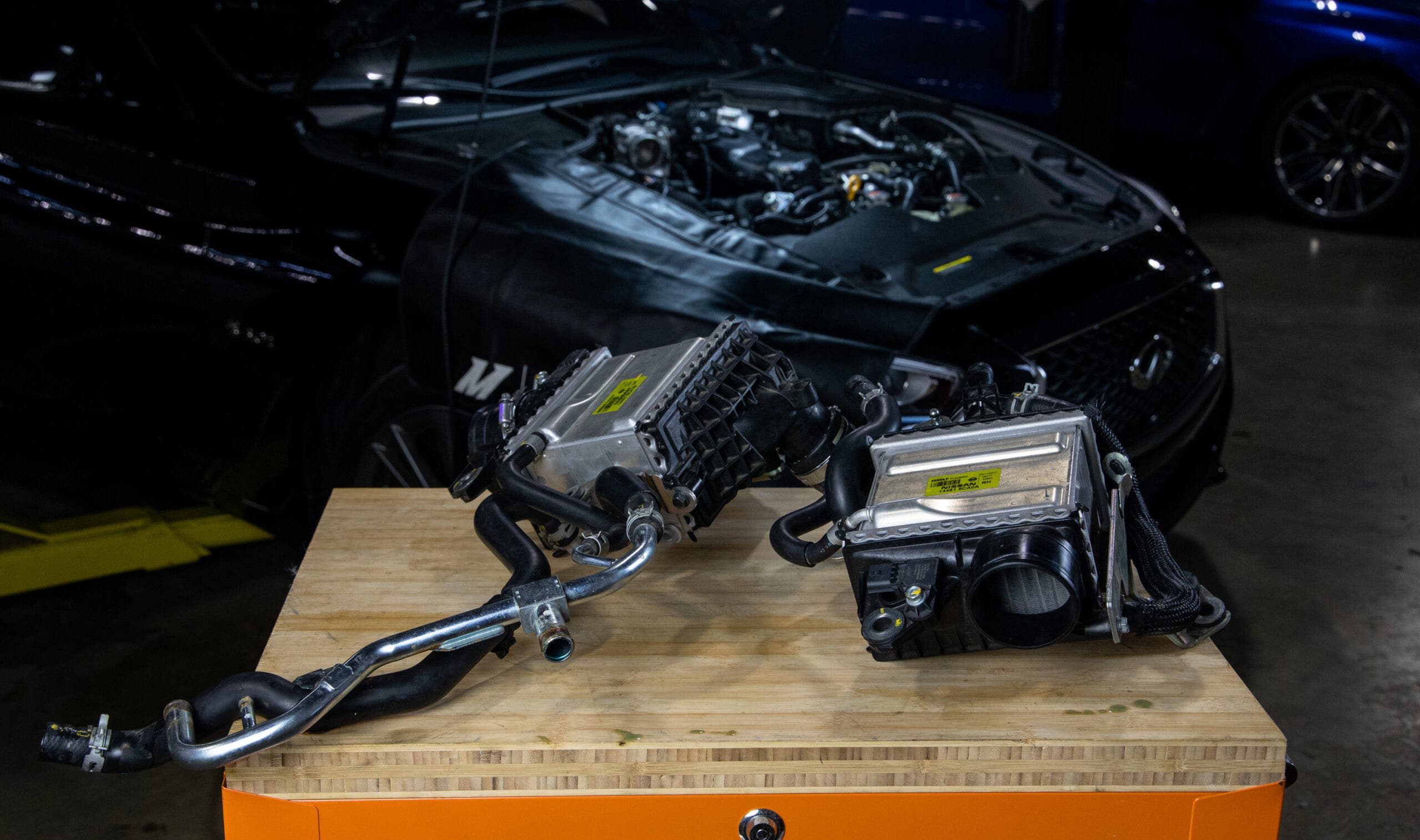
For a closer inspection, we pulled the intercoolers out of our donor vehicle. The cores might be small, but they're mighty. Each core measures in at 5.75" x4.625" x3.25", equating to an internal volume of 86.43in^3. It might not sound like much, especially compared to the sprawling dimensions of air-to-air coolers, but that's the advantage of the air-to-water setup. Bigger cooling power can be squeezed into smaller packages. Size does still matter, even with these air-to-water systems, but we'll dive more into that in the next installment.
Size is one characteristic that matters, but construction is another. The air-to-water system is advanced, but the construction methods are pretty standard to what we typically see in intercooler construction, which is plastic end tanks crimped to a lightweight tube-and-fin core. This method isn't necessarily a detriment to the car's intercooling system and is adequate for most daily driving conditions. However, plastic does degrade over time and much more prone to cracks and leaks.
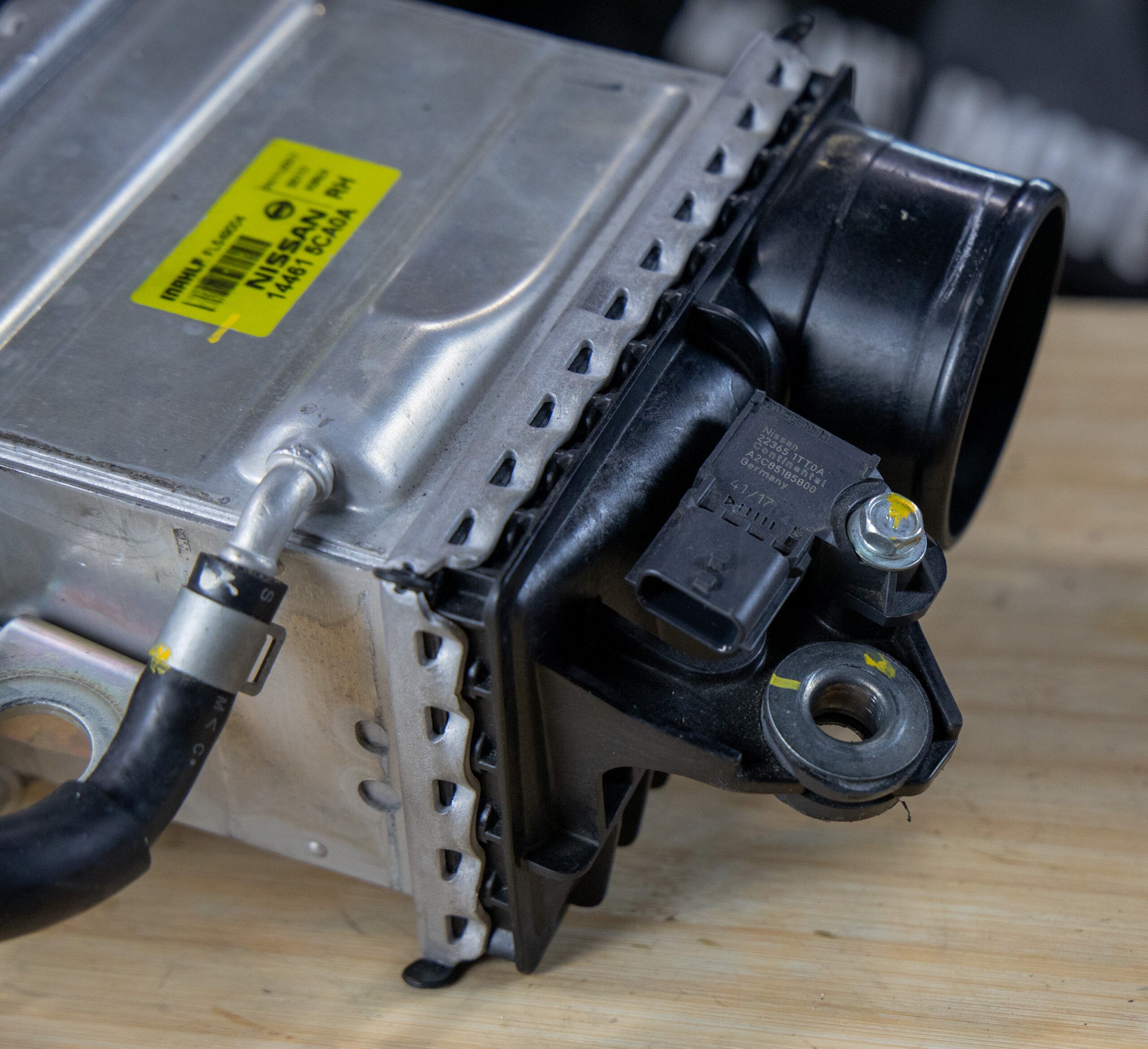
The factory design of these end tanks is also prone to reduce flow through the intake system. The compact nature of the air-to-water system has plenty of advantages, but Infiniti might have gone a little too compact when it comes to the end tanks, specifically on the outlet side. Simply put, it's a flat wall, which is a major source of restriction leading to the throttle bodies, especially for those running more boost or bigger turbos.
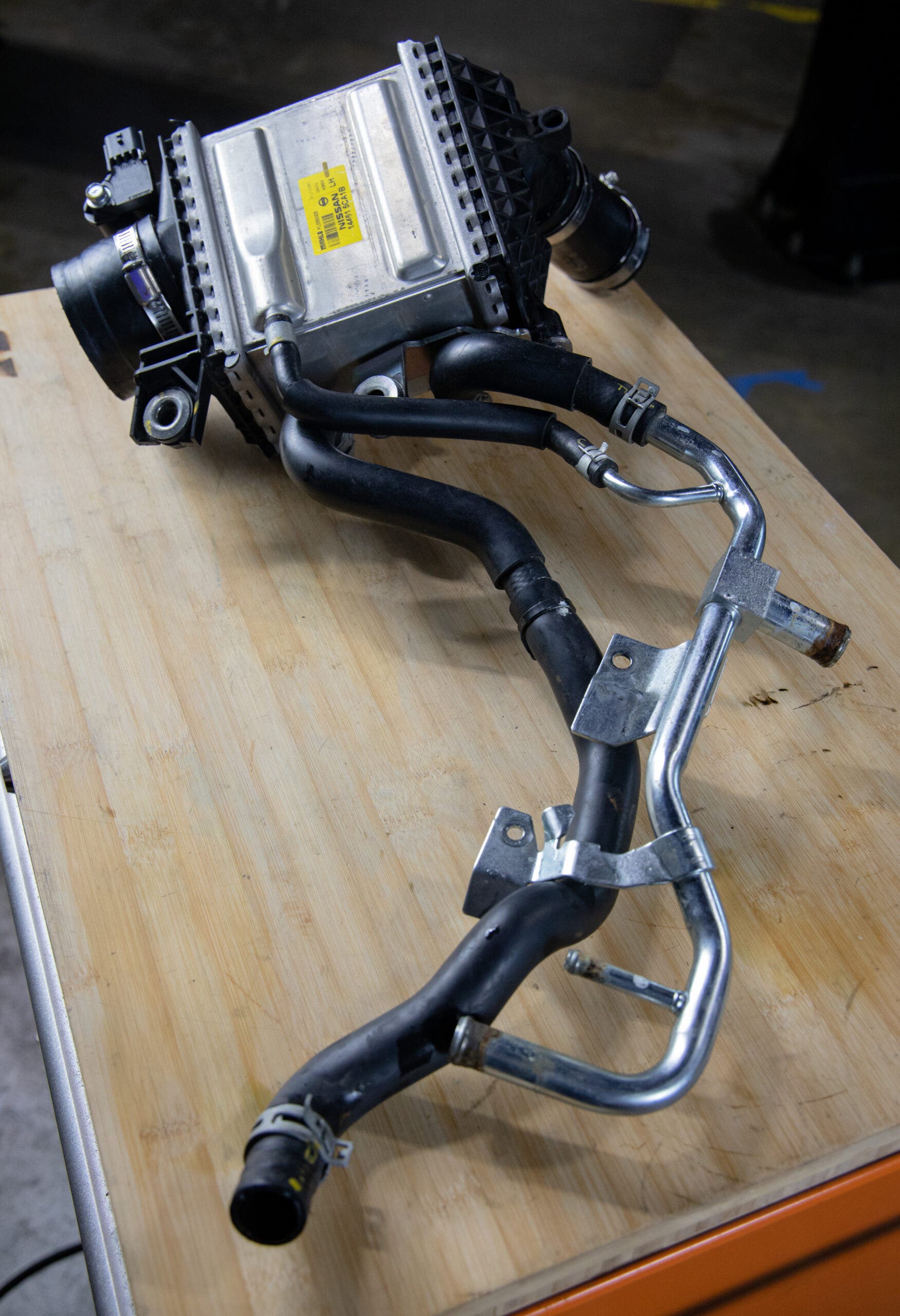
The Q's may be designed with luxury in mind, but there's still plenty of performance potential draped under the layers of quilted leather. Upgrading the intercooling system is the key to unlocking power potential, and we have just the thing in mind. Make sure that you stay tuned for the next installment going over our design plans for the VR30DDTT's intercooler overhaul.
Thanks for Reading!
-Nick




